At this point, we all know that cycling is a great form of exercise right? It is an excellent aerobic workout with clear and obvious benefits to the cardiovascular system.
Another great benefit of cycling is that it’s low-impact. You won’t put excess stress on joints like you would with running or jogging.
But is it safe to cycle with existing conditions and could they even benefit from cycling? This article will explore the effects of cycling with chondromalacia patella.
We will let you know more about the condition itself before exploring the benefits of cycling and other low-impact exercises on it. We will also take a look at the risks involved and how best to avoid them.
Key Takeaways: Is Cycling Good for Chondromalacia Patella?
- Learn more about the condition known as Chondromalacia Patella
- Discover the effects of cycling on Chondromalacia Patella
- Learn how to cycle with Chondromalacia Patella
- Explore other low-impact exercises for people with Chondromalacia Patella
- Learn how to mitigate the potential risks of cycling with Chondromalacia Patella
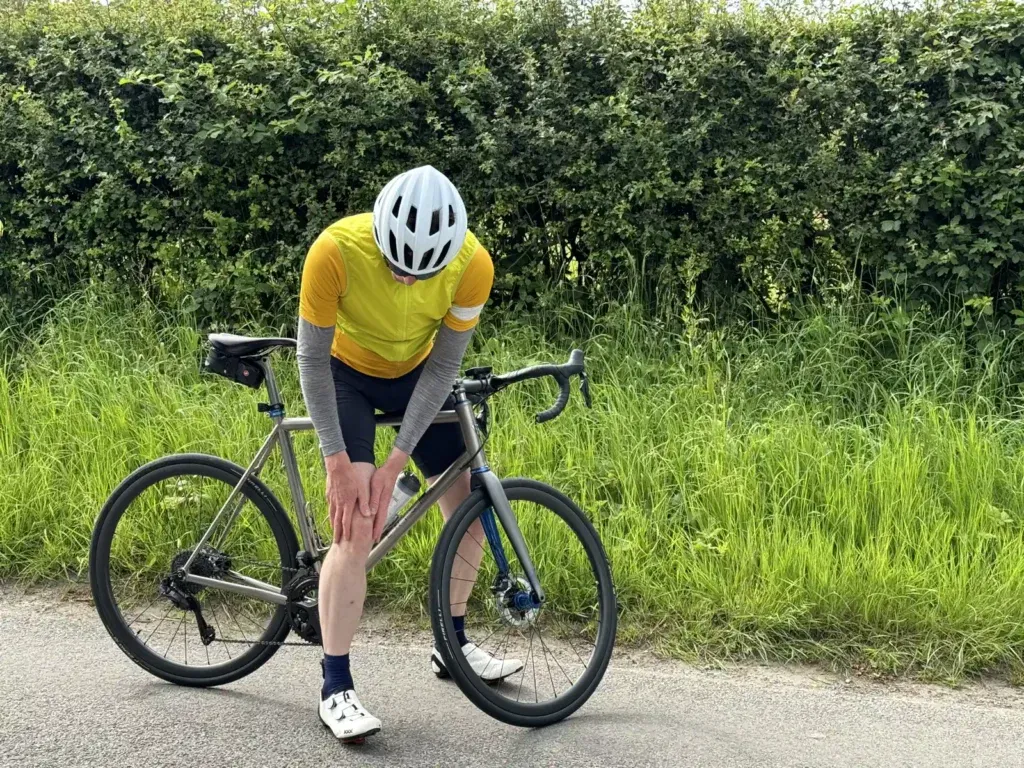
What is Chondromalacia Patella?
Chondromalacia Patella knee pain is a result of the cartilage beneath the patella (kneecap) breaking down.
The kneecap should glide smoothly over the groove at the bottom of the thigh bone. It is a relatively common condition among athletes and is also known as “runner’s knee”. Another term for it is patellofemoral syndrome.
Chondromalacia Patella results in a painful grinding sensation when bending or straightening your leg. The pain can develop during physical activity.
There are a number of ways the condition can develop. These causes include:
- Knee trauma
- Muscle imbalance
- Repetitive stress
- Patellar misalignment
- Excess body weight
- Abnormal foot biomechanics
- Age
Knowing the root problem that is causing Chondromalacia Patella will make it easier for the sufferer to treat the symptoms. Treatments typically involve rest and elevation. Anti-inflammatories can help with swelling and pain medication is sometimes needed.
Physical therapy can be used to strengthen the leg muscles around the knee and surgery is sometimes needed for severe cases.
You should speak to your healthcare specialist if you are suffering from knee pain. They will be able to diagnose the cause and provide expert advice on recovery or treatments.

Why Cycling is a Good Option for People with Chondromalacia Patella
The question that will have brought you here will likely be “Is cycling good for chondromalacia patella?”
Cycling can be an excellent way for people with knee injuries to exercise. This is because you won’t put weight on your knee joints but you can still exercise and build the muscles around it.
Using strengthening exercises to build the muscles around the knee including the inner quadriceps muscles will help to align the patella’s movement over the femur.
Using a stationary bike will help you build your leg muscles in a controlled environment. You will be able to set the resistance and won’t have to worry about movements or road conditions that might affect your recovery.
How to Start Cycling with Chondromalacia Patella
If your doctor or physical therapist says it’s alright to continue cycling with Patella Chondromalacia it’s essential that the bike is properly adjusted.
You should be able to fully bend and extend your knee when sitting. This range of motion is required for cycling properly.
Cycling should be used as part of your plan to recover from the condition. Cycling will improve motion and build muscle, but further strengthening may be required. Physical therapists can work out recovery plans to suit sufferers.
Exercises like squats will help with strength but must be carried out correctly to avoid further injury. The seat height should start level with your pelvis bone. You should use this as a starting point and make further adjustments if necessary.
You should ensure that you do not need to overextend your leg when you are at the bottom of the pedaling cycle. It is equally important that the knee does not bend too much at the top of the cycle.
Not only will you look like a circus performer on a comically small bike, but you may also exacerbate the condition.
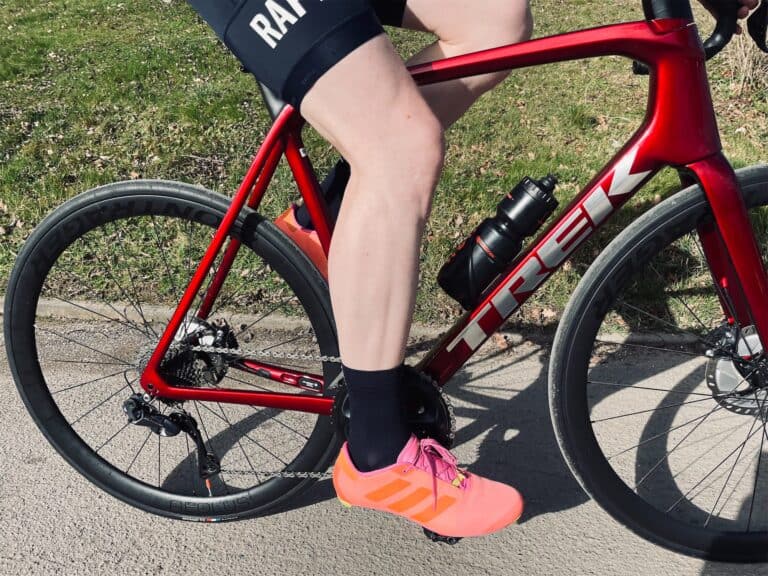
A slight bend should be present when your foot reaches the bottom of the pedaling cycle. The bend at the top should feel comfortable and your knee should not extend beyond your pelvis.
An upright position is best suited for recovery. Because of this, having the handlebars higher and closer to you will help.
Proper cycling techniques will engage the right muscles. Clenching your glutes as you extend each leg rather than pushing through the quadriceps muscles will minimize the risk of overdeveloping your quads.
Overdeveloped quads can push down through the knee and create more pressure.
You can avoid this by slowing down and developing your technique. After your workout, your glute muscles should feel more tired than your quads.
If you need a knee brace to cycle, this is because cycling is causing you pain. Instead, you should rest until you can cycle without it.
Cycling on a stationary bike slowly for around 15 minutes will be enough to start your recovery process. Try to have a day-on, day-off routine to ensure time for recovery.
You can gradually increase the time you spend on the bike as long as you don’t feel pain. 20 to 30-minute sessions should then be implemented before moving up to around an hour.
If you are cycling outside, try to find a relatively hill-free cycle route that will allow you to carry out gentle exercise.
Other Low-Impact Exercise Options for People with Chondromalacia Patella
Exploring different low-impact exercise options will benefit people with Chondromalacia Patella. Some of the best options include:
Walking
Walking is a great way to enjoy a cardio workout without putting too much pressure on your knees.
Start off by investing in supportive shoes and walking in flat areas. You can gradually increase the difficulty and speed of your walks as you recover.
Swimming
Swimming is an excellent form of exercise that works a lot of your body’s muscles without impact.
Resistance and aerobic exercises in water are great options. Just make sure when you swim that you aren’t pushing off from the wall using your legs.
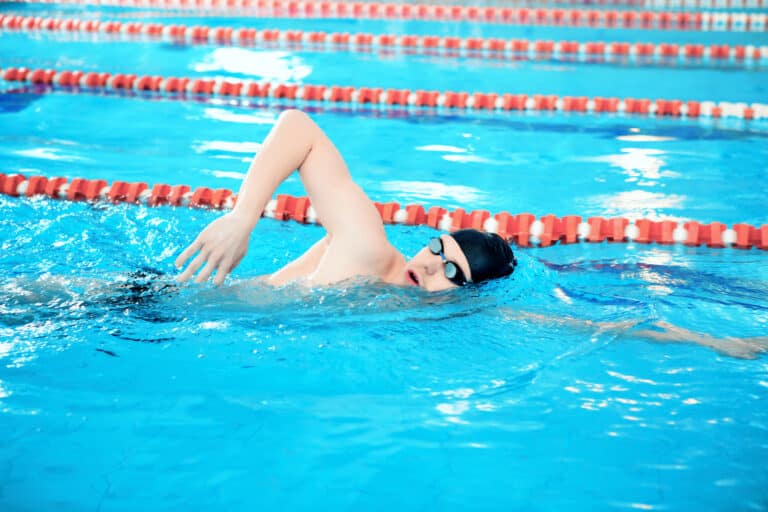
Elliptical machine
The elliptical machine is another great option that allows users to run or walk without impact.
Stretching
Stretching exercises can be used to relieve patellofemoral pain syndrome. While they may not leave you completely pain-free, they can aid in recovery, and mobility, and increase blood flow.
Some of the best chondromalacia exercises to heal knee pain include:
- Semi Squat
- Straight Leg Raise
- Hip Extension Leg Raises
- Side Lying Leg Raise
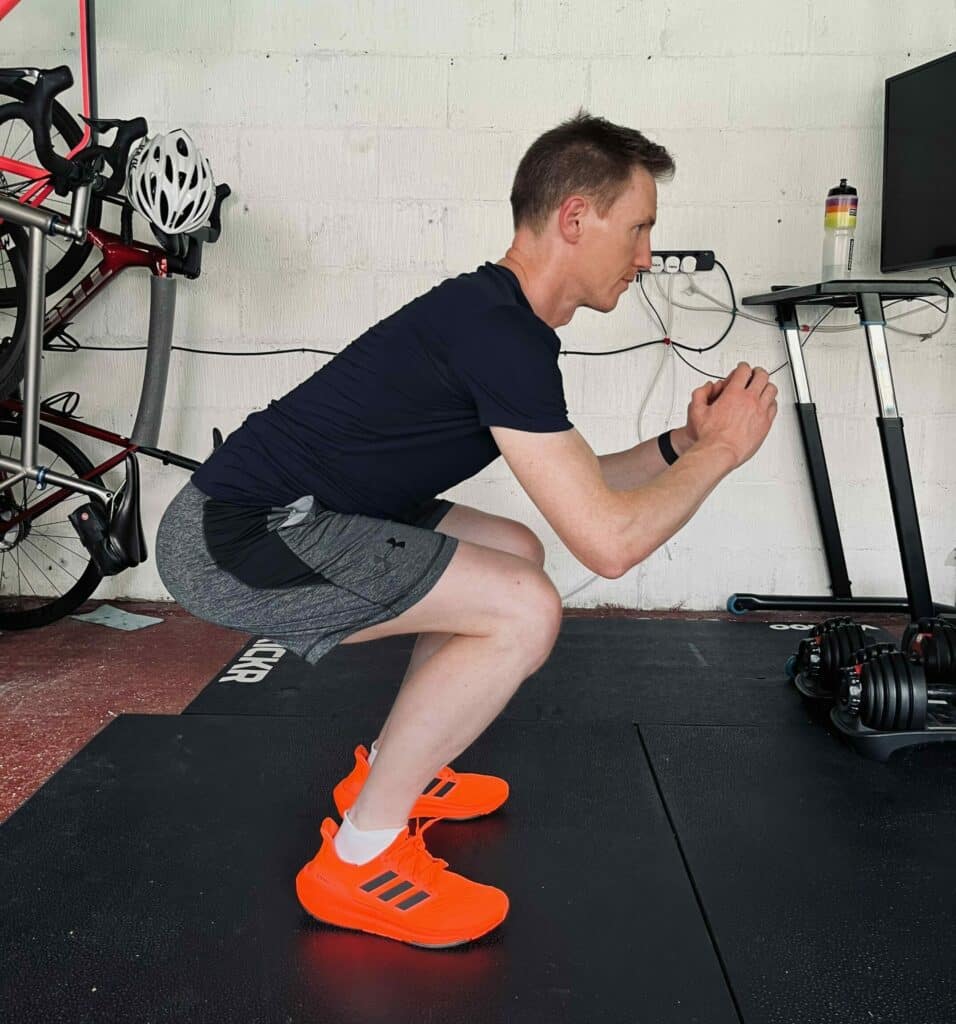
Precautions and Possible Risks of Cycling with Chondromalacia Patella
The irony that Chondromalacia can be both caused and cured (to some extent) by cycling is not lost on us. While it may sound like a paradox, it actually goes to show the importance of technique and listening to your body.
Overuse and misalignment are two major causes of Chondromalacia. This can be common among athletes like cyclists and runners.
Cycling knee pain can sometimes be caused by a bike that is not the right size for the rider or one that has not been set up correctly.
You must ensure your full leg extension keeps a slight bend on the downward cycle. Your knee joint shouldn’t bend above your hip when it comes back up.
Setting the right handlebar and saddle height on stationary or outside bikes will reduce the risk of injury when cycling. It will also improve performance and results.
Cycling in the wrong position can also result in the wrong muscles being targeted.
Chronic knee pain can be a telltale sign that you are doing too much. If you start to feel chondromalacia pain in the knee joint, you should not try to push through it.
If you start to feel pain you should consult your healthcare provider for further advice. Healthcare professionals may advise rest or get physical therapists to work you through a recovery program.
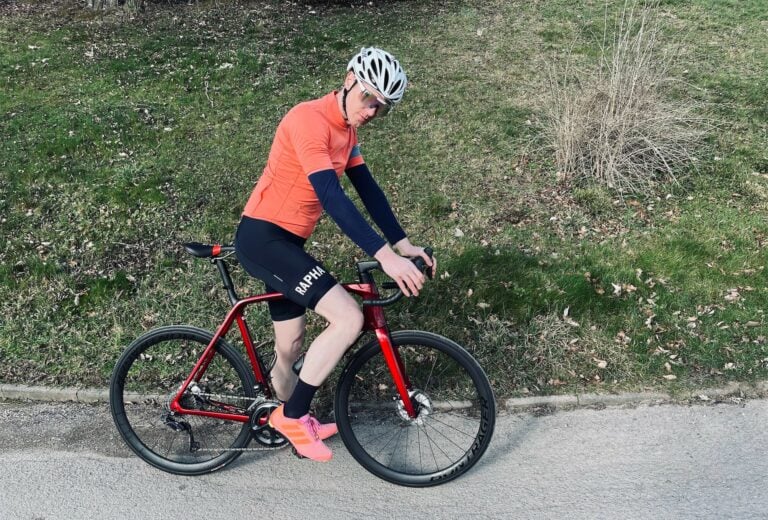
FAQs
What is the difference between Patella Chondromalacia and Iliotibial Band Syndrome (ITBS)?
Patella Chondromalacia causes anterior knee pain in and around the kneecap. ITBS results in lateral knee pain when the tendon known as the iliotibial band rubs against knee or hip bones.
How can I reduce pain and swelling from Patella Chondromalacia?
Applying an ice pack for around 20 minutes can help to reduce the pain and swelling associated with Patella Chondromalacia.
If you experience pain and swelling after exercise, you may be prescribed non-steroidal anti-inflammatory medication by a healthcare professional.
Should I lose weight if I suffer from Patella Chondromalacia?
In some cases, weight loss can help Patella Chondromalacia sufferers. This is because it will reduce the weight on your knees.
Your healthcare professional will advise you if weight loss is necessary and help you come up with a treatment plan to help your knee recover.
Sources
https://sportmed.com/wp-content/uploads/Chondromalacia.pdf https://www.epmanualphysicaltherapy.com/can-cycling-actually-help-heal-knee-pain-from-chondromalacia-patella/
https://www.braceability.com/blogs/articles/chondromalacia-patella-exercises https://rosserchiro.com/understanding-knee-pain-in-cycling-and-chondromalacia-patella/
https://www.trainerroad.com/forum/t/chondromalacia-patella/28637 https://m.mendmyknee.com/knee-and-patella-injuries/cyclists-knee-pain-patellofemoral-syndrome.php
https://pezcyclingnews.com/toolbox/toolbox-cycling-knee-pain/ https://www.verywellhealth.com/chondromalacia-treatment-5105422 https://bicycles.stackexchange.com/questions/81620/has-anybody-recovered-from-or-riding-with-pfs-chondromalacia-patella
https://drrobertlaprademd.com/patellofemoral-chondromalacia
